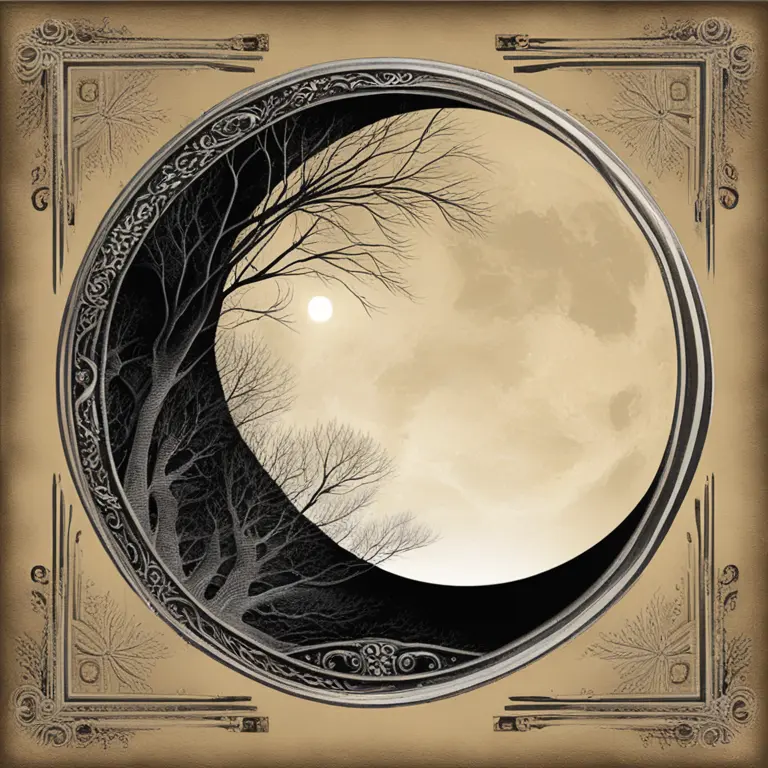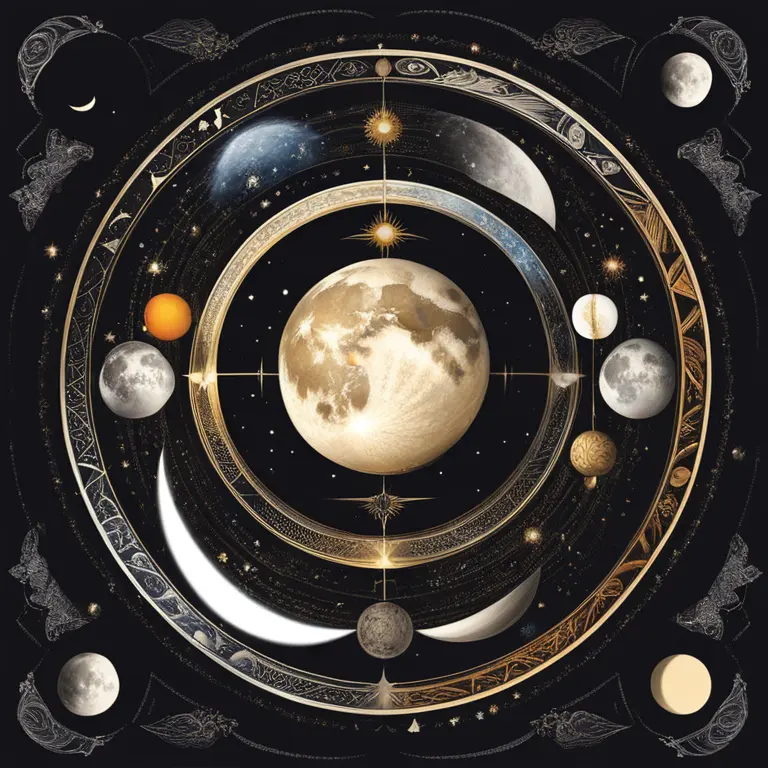
New Moon vs Full Moon: Mystical Power Comparison
The celestial dance of the Moon phases influences our lives. Discover which holds more sway: the introspective New Moon or the illuminating Full Moon.
article by Priya Deshmukh
The Celestial Cycle's Impact
In pursuit of understanding the cosmos' influence on human life, we often turn to the Moon, our closest celestial neighbor. Its cyclical transition from new to full and back again holds a special significance in various cultures and practices, such as astrology and palmistry. A common question that arises is: which is more powerful, the New Moon or the Full Moon? To delve into this query, we must consider their unique attributes and the different ways they interact with the universal energies that govern our existence.

New Moon: A Time for Beginnings
Astrologically speaking, the New Moon is a time of initiation and new beginnings. This phase marks the start of a new lunar cycle, making it an excellent time to set intentions for the future. It is a period of introspection, where the night sky is devoid of the Moon's light, prompting us to look within and contemplate our deepest desires. The darkened sky during a New Moon encourages personal growth, goal setting, and the planting of metaphorical seeds to cultivate as the Moon waxes towards fullness.

Full Moon: A Peak of Energy
In contrast, the Full Moon represents the peak of the lunar cycle, a time when the Moon's energy is at its most potent and visible. Astrological traditions see the Full Moon as a culmination of the efforts and intentions set during the New Moon. It's a period often associated with clarity, realization, and the illumination of truths that were previously hidden. Full Moons are also notorious for stirring emotions and magnifying personal dynamics, making it a powerful time for releasing what no longer serves one's higher purpose.

Comparing the Moons' Powers
When comparing the power of the New Moon to that of the Full Moon, it's essential to recognize that "power" can manifest in various ways. The New Moon's power lies in its subtlety, the potential for change, and the quiet determination to start anew. On the other hand, the Full Moon's power is more immediate and evident, impacting our emotions and external circumstances with greater intensity. Both phases offer different opportunities: the New Moon for setting the stage and the Full Moon for bringing forth the drama.

Cultural and Practical Reverence
Culturally, both the New and Full Moon have their specific reverences. The New Moon is often associated with rejuvenation and purity in many traditions, providing a sacred space for spiritual practices and rituals. Conversely, the Full Moon is celebrated with gatherings and ceremonies, acknowledging its radiant splendor and the completion of a cycle. Practically, in biorhythms and compatibility studies, these phases can signal shifts in energy and mood that can affect interpersonal relationships and individual well-being.
Modern Applications and Influence
With astrology's resurgence in popularity, many seek guidance from the stars for their personal and professional lives. As we move beyond 2024, the role of astrology in decision-making and self-reflection will likely continue to grow. Understanding the nuanced influences of both the New and Full Moon can empower individuals to make aligned choices, enhance their relationships, and navigate life's ebbs and flows with greater harmony.
Published: 1/19/2024
Modified: 1/19/2024
More predictions
Come back here soon to learn more about yourself and your future


Optimal Moon Phases for Successful Deer Hunting
Discover the impact of lunar phases on deer activity and learn when to plan your hunting trips for the best chances at a successful harvest.


The Lunar Cycle's Role in Our Life
Discover how the moon's phases can impact personal rhythms, horoscopes, and insights into life's mysteries in this enlightening article.


Best Moon Phases for Optimal Fishing Success
Discover the optimal moon phases for fishing and how they influence fish behavior, enhancing your chances for a successful catch.